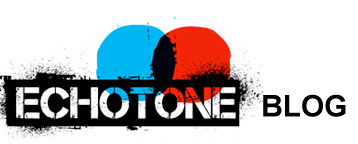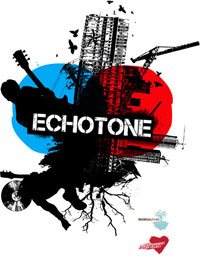Echotone’s Transmedia Playground
Transmedia gives us the ability to move beyond the limitations of the feature film format to provide context for the stories being explored in Echotone. From blog posts and to short form web content, to streaming Filmmaker Q&A’s, the windows for media on the internet and in mobile devices expands daily, giving the Echotone team unique tools they use to continue the Echotone story. This complex transmedia story is guided by Director Nathan Christ’s vision for an umbrella narrative that encompasses the diverse opportunities for conversation around the project, both online and off.
Is this a movie about city development? The construction? Construction and how it relates to artists? A rockumentary? Why isn’t Band X in the film? Band Y with that drummer was really where they got started -… a very specific line of feedback that stems from a particular proximity, either industrially, emotionally or geographically influenced. According to Nicoletta Iacobacci, head of interactive TV at Eurovision, the transmedia format develops storytelling across multiple forms of media in order to have different “entry points” in the story; entry-points with a unique and independent lifespan but with a definite role in the big narrative scheme.
It wouldn’t be fair to say the feature film format is limited, but it’s true that within ninety minutes choices have to be made for story, mood, tone, and texture that force a filmmaker to remove strong segments, sounds, and images that at times may have served as inspiration for the project itself. Ted Hope states in his blog that transmedia holds tremendous potential in its efforts to turn the presentation into an actual dialogue, although we still lack the defining work that goes beyond cross-platform to an actual back and forth with audiences, with both sides being equal creators.
One of our favorite case studies is Heroes creator Tim Kring and, of course King George and the Star Wars franchise. Fast Company wrote an amazing article on the transmedia space of Heroes in April of 2008, that you can check out here. These examples are rooted in the world of fictional narratives, so how does this larger concept apply to the world of documentary?
Transnarrative storytelling is particularly useful for documentary filmmaking. The 300 hours of footage collected in the production of Echotone holds a world of performances, conversations exploring in the history and influences of the Austin music community, a wide range of visual perspectives on Austin’s development and changes, and much more. Even more importantly, it will give the Echotone team room to continue chipping away at the larger thematic ideas the project explores, such as the differences between being a working musician in Austin as opposed to in New York and Los Angeles, or covering new DIY marketing and distribution “how to’s” from our favorite music mavens like Indierect Record’s Dániel Perlaky
The first piece of content we decided to release is this teaser trailer. It is crafted to be something you feel; a moment that is brief and doesn’t linger, keeps you guessing, but doesn’t give you the story right up front -… the first emotional glimpse of the film.
Since Echotone is an esoteric state of mind that exists in the physical and emotional spectrum of the creative class, we felt that anchoring the first piece of content in story mechanics would be too familiar and traditional. Instead we just want the audience to feel it, and feel the world around the film.
We will be sharing occasional thoughts on Echotone’s process while it steadily churns toward completion. Please join the conversation if you like what you hear – share Echotone with your friends or followers, and we hope you enjoy(ed) Echotone’s first teaser trailer.
Stay tuned…
- Nick and Vic, Reversal Films

